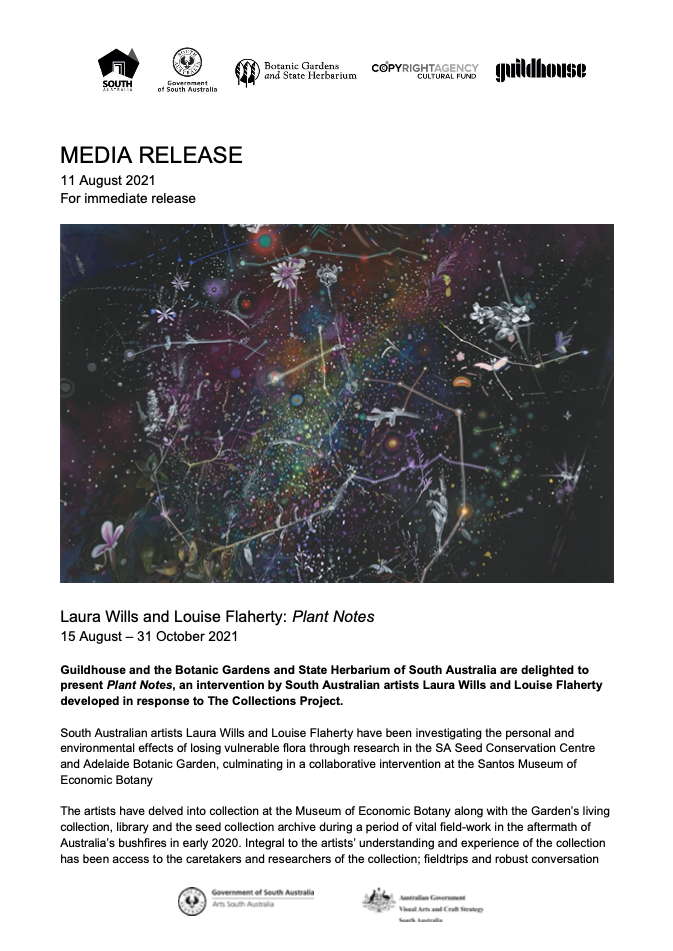Media Releases 101

Promoting your practice is an integral part of an artist’s career. Media releases are an ideal way to find new audiences and get attention.
A media release is different to an invitation, and contains background information about the artist(s), the work and the show. Media releases are targeted to people who might want to view, write about, promote or review the show. Media releases can also be sent to curators, gallerists, clients or others who could be interested in knowing more about your work.
How to write a media release:
- Label as Media Release with a clear date (For Immediate Release) or embargoed date. Include the words Media Release in your email subject line.
- Have a strong, catchy headline – making your media release stand out amongst all the others. Decide how you want to pitch your exhibition/news/event and work that into the headline.
- Your introduction paragraph (can be in bold) should be strong, concise and contain all the key pieces of information.
- Include a quote or quotes from the artist(s), gallery director or relevant participant that contains newsworthy information/insight.
- Your most important information should be in the lead two paragraphs. Keep all sentences and paragraphs short.
- Use a simple font; don’t be fancy here. Keep the message simple.
- Try to contain the entire media release to one page, go to a second page if absolutely necessary – but no more than two pages.
- Include one or two strong, good quality images to create further interest. Make sure you include image credits.
- At the end of the release supply contact details where media can obtain further information. Include the name, position title, contact phone number and email address.
Where to send the media release:
Finding the right audience is crucial to getting attention. It is important to understand who the audience for your media release is. Who is the best media outlet to promote your story so it is noticed by the audience you’re targeting? Are you approaching traditional media like newspaper, magazines and radio or perhaps new media like bloggers and other online influencers is a more cost-effective way to increase awareness.
Is your audience local, national or international? If you contact local media, reword your message so it is more relevant to the local audiences.
Find out who usually receives media releases in an organisation. It might be the chief of staff in a newspaper or the producer of a radio show or television program. Most media organisations will have a staff page on their website with contact information.
TIP
For example, below is an example of a Guildhouse media release, announcing the launch of artists Laura Wills and Louise Flaherty’s body of work, made for The Collections Project, at the Museum of Economic Botany. Click to view.
Guildhouse financial members are able to obtain one on one professional development support about many areas of their practice. Contact us for more information.

